Best hardtail mountain bikes 2022 – our pick of the ultimate trail and cross country hardtails
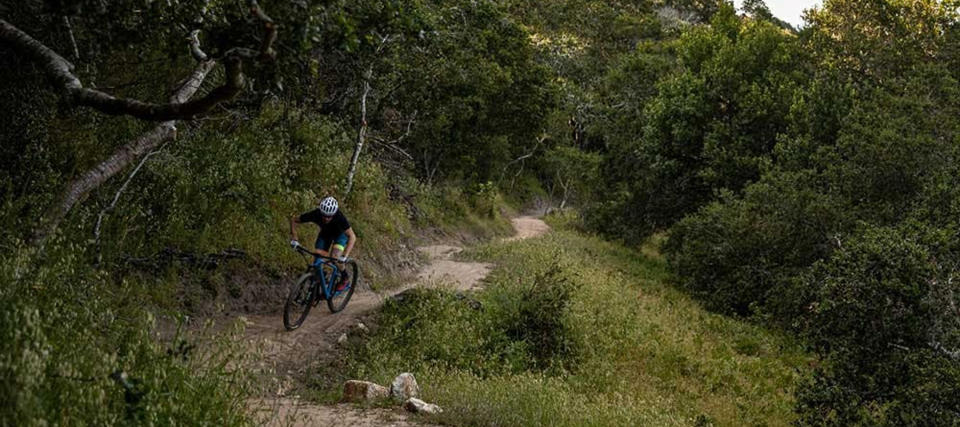
While there's no doubt that best hardtail mountain bikes are great options for beginners, they're also a top choice for experienced riders looking for the lightest bike possible or who want to experience the most direct trail feel. Without rear suspension, hardtails give better pedaling efficiency and reduced mechanical complexity, which makes for a more responsive and easier to maintain bike.
With advancements in frame technology and rim width, not to mention the best mountain bike tires that are now available in bigger sizes, hardtails are a lot less taxing on the body than was the case a few years ago. A carefully considered hardtail build can deliver tremendous all-round riding ability, for much less money than the best full-suspension mountain bikes.
Our testing explained
For information on Bike Perfect's testing procedures and how our scoring system works, see our how we test page.
The overall ownership cost of a hardtail is cheaper too, as without a rear shock and frame pivots, there are less costly parts to replace and service. While you can buy a much nicer hardtail for less money than an equivalent full-suspension build, we also have a guide to the best hardtails under $1500 so you can still hit the trails on an excellent value mountain bike.
Keep scrolling to see our pick of the best hardtail mountain bikes, from cross-country whippets to proper hardcore trail blasters. At the bottom of the page, you can find our advice about everything you need to know about buying a hardtail mountain bike.
The best hardtail mountain bikes
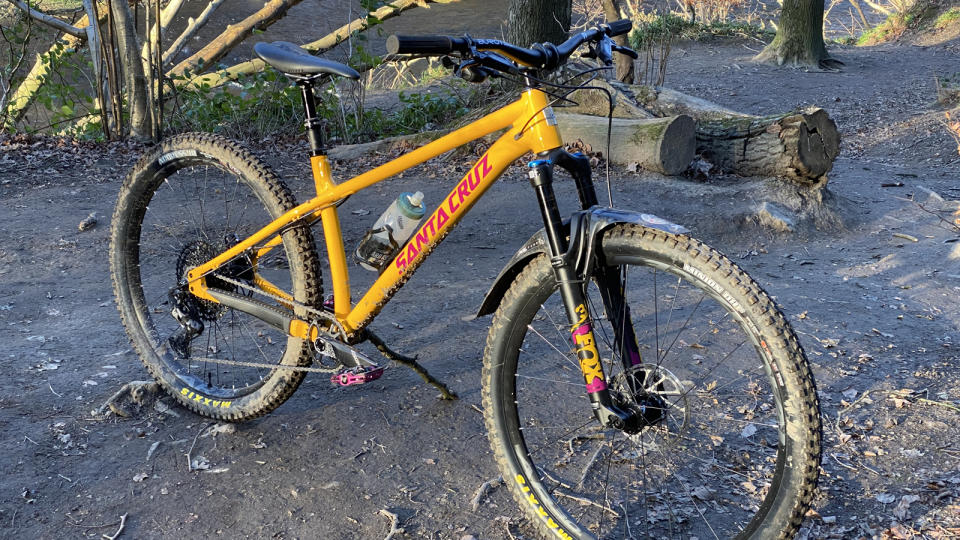
Santa Cruz Chameleon
Best premium hardcore hardtail
Weight: 13.3kg | Size: S, M, L, XL | Travel: 130mm | Head angle: 65-degrees | Seat angle: 74-degrees
Very tough but remarkably forgiving frame
Balanced aggro trail geometry
Adjustable dropouts
29 and mullet options
High Control tires and impressive Fox Rhythm fork
High comparative cost
Specced kit could be better
Heavier than we'd like
The Chameleon has always been the most engaging and the easiest-on-the-wallet entry into owning one of this premium brand's bikes, and this eighth edition of Santa Cruz's most trail-friendly hardtail is the most versatile, confident and flat-out-fun incarnation yet.
Despite the finishing kit being a tad below par to that found on comparably priced bikes, the forgiving yet massively capable ride is so much fun that it won't ever cross your mind.
For our full verdict, check out our Santa Cruz Chameleon review.
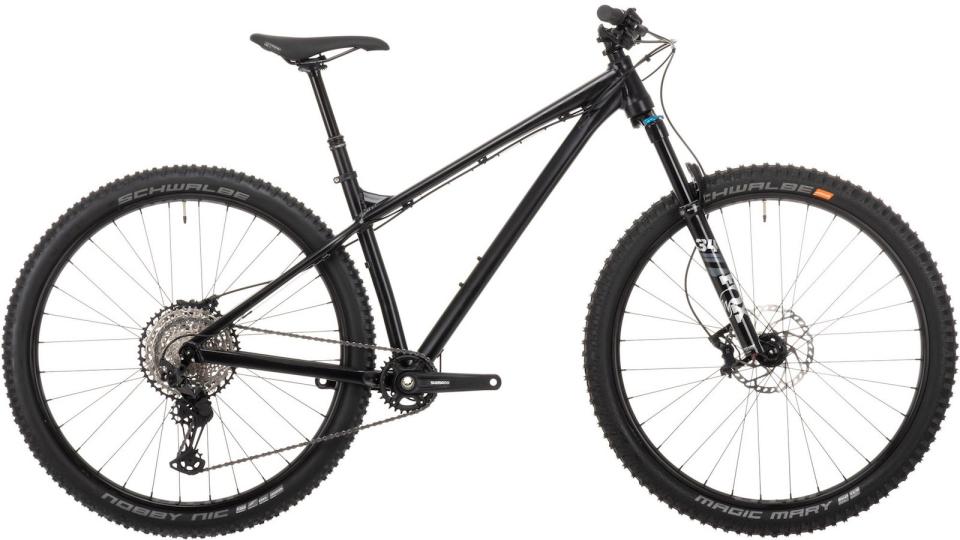
Vitus Sentier 29 VRX
Hardtails don't need to cost the earth to shred the trails
Weight: 13.1kg (medium) | Size: S, M, L, XL | Travel: 130mm | Head angle: 66.5-degrees | Seat angle: 73-degrees
Incredible spec for the money
Well refined ride characteristics
The crankset is notably lower spec than the rest of the bike
Trail-shredding performance doesn't have to cost the earth, for just a small bump in cost over the best mountain bikes under £1000, we think the Vitus Sentier 29 VRX offers an unbeatable package. In fact, if you're looking for a bike for days tearing up trail centers and local singletrack the Sentier VRX makes it hard to justify spending more money.
Modern trail geometry and 130mm of travel from a Fox 34 Float Performance fork keep the Sentier up to speed on the trail. Shimano brakes bring the bike to a stop using SLX brakes, and there is also an XT rear derailleur that leads up an SLX 12-speed drivetrain. The bike is easy to maintain as well with outer cable routing (apart from the dropper) and a threaded bottom bracket shell.
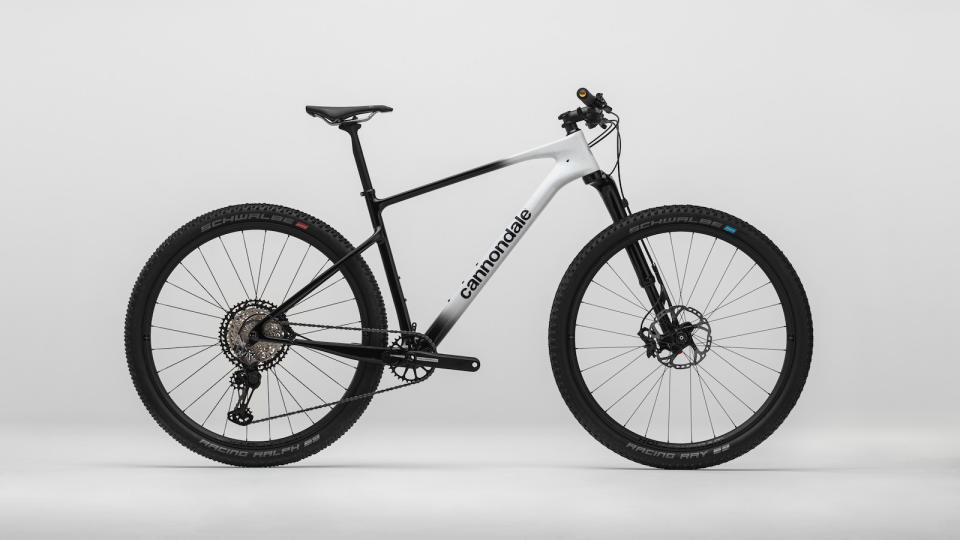
Cannondale Scalpel HT HI-MOD 1
Best cross-country hardtail
Weight: 9.8kg | Size: SM, MD, LG, XL | Travel: 100mm | Head angle: 65.5-degrees | Seat angle: 74.5-degrees
Progressive geometry
Lightweight
One of the best XC suspension forks available
Dropped seat stays and flex zones reduce vibrations
XC handling won't suit trail use
Cannondale Scalpel HT is the American brand's newest lightweight racing hardtail with progressive geometry numbers. While the brand's previous XC hardtail featured a steep 69-degree head angle, the Scalpel HT seeks to improve handling and technical performance with a much slacker 65.5-degree angle. That's combined with a 74.5-degree seat tube angle to boost pedaling efficiency and traction. To keep handling sharp Cannondale has specced the bike with an extra-long fork offset which reduces the trail figure to improve agility on tight sections of trail.
The HI-MOD 1 is the top-end model featuring a Shimano XT/XTR build kit along with Shimano brakes, Cannondale HollowGram 25 carbon rims, Schwalbe tires, and Cannondale's Lefty Ocho fork which has 110mm of travel. It weighs in at under 10kg (claimed).
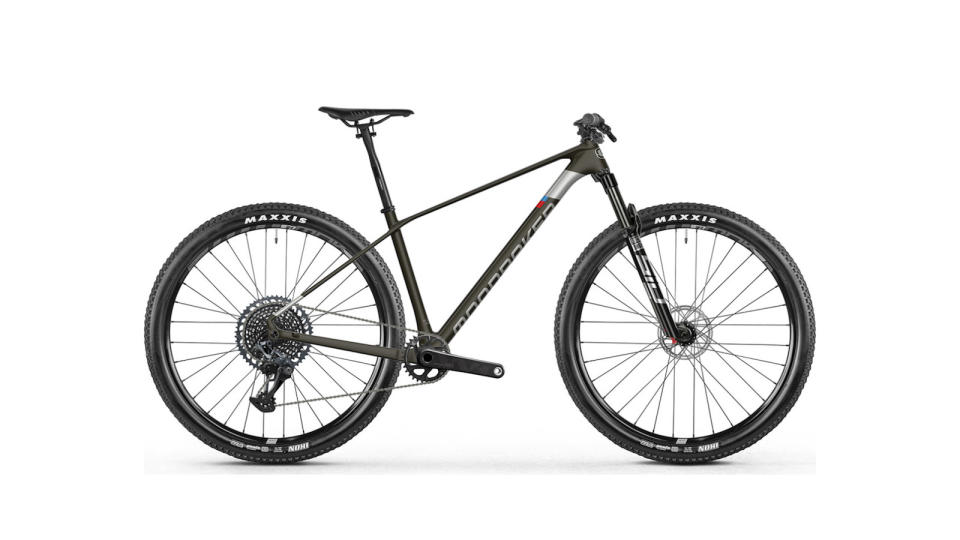
Mondraker Podium Carbon RR SL
A very stable Spaniard
Weight: 8.1kg | Size: S, M, L, XL | Travel: 100mm | Head angle: 68.5-degrees | Seat angle: 73-degrees
Advanced carbon component integration translates to very low weight
Mondraker Forward Geometry
Relatively steep geo by 2022 standards
Mondraker has forgone the unique profile of the last generation Podium for a more traditional look.
Although Mondraker was among the first bike brands to champion longer bikes with its forward geometry concept, the Podium does not rank as an exceptionally long frame by 2022 standards. Its reach of 425-477mm (depending on size) is on the shorter side. And compared to the new Cannondale, it isn't the slackest bike either.
It remains an impressively light bike suited to those who wish to register PRs on the climbs. With a built weight of only 8.1kg, the Mondraker Podium RR SL is even lighter than the previous generation model.
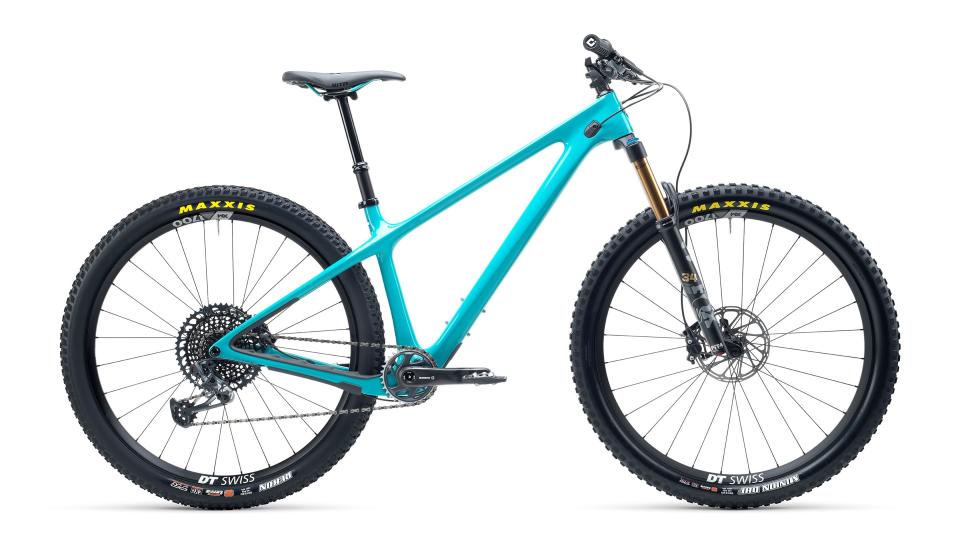
Yeti ARC
A classic bike, reborn into a modern shredder
Weight: 10.8-11.3kg | Size: S, M, L, XL | Travel: 130mm | Head angle: 67-degrees | Seat angle: 76-degrees
Solid frame construction and geometry for trail riding
130mm of fork travel great for descending
Premium pricing
The Yeti ARC has been around since the '90s, but the classic bike has been given a refresh. Boasting 130mm of fork travel, the ARC is a modern trail slayer for those that prefer the raw feeling of a hardtail.
Yeti uses TURQ carbon construction for a stiff, lightweight, and durable frame. Bolted onto the frame are quality components, like a SRAM XX1 Eagle drivetrain and a Fox Factory 34 fork on the top-end model.
This bike is not necessarily designed to be a World Cup race bike, but a talented rider could certainly make it go fast on any course. This is an ideal bike for trail riders who prioritize chunky terrain and even multi-day bikepacking adventures.
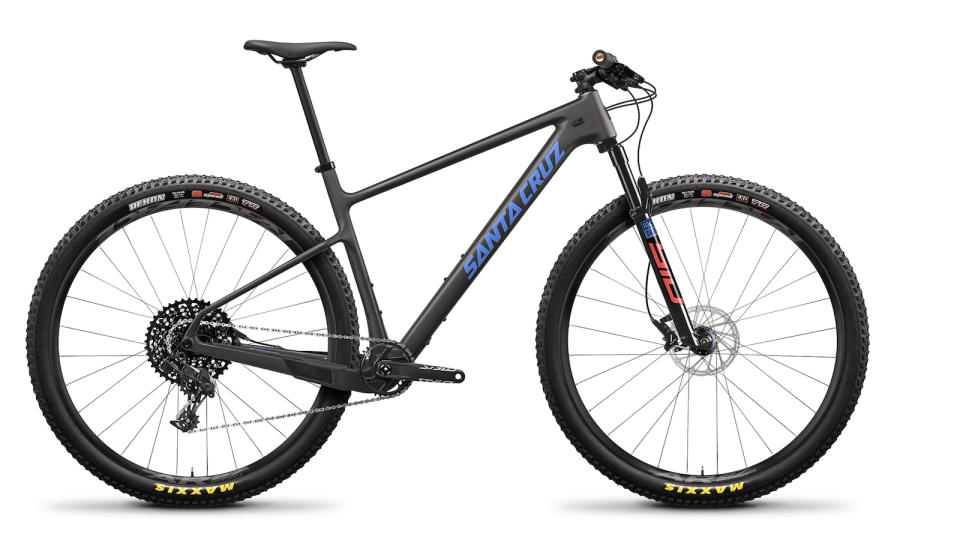
Santa Cruz Highball
A versatile carbon Californian
Weight: From 9.1kg | Size: S, M, L, XL | Travel: 100mm | Head angle: 69.5-degrees | Seat angle: 73-degrees
Can be run single-speed or geared
Lightweight frame built by Santa Cruz’s own dedicated carbon factory
Geometry is decidedly cross-country, for a Santa Cruz
Another contemporary carbon hardtail that runs a 27.2mm seat post, Santa Cruz’s Highball might have all the attributes of a lightweight racing machine, but it does not shy away from descents.
Santa Cruz established its reputation with trail and downhill bikes. The company’s engineering focus is biased toward descending, but with the Highball it proves that if you wish to race a Californian cross-country frame that isn’t from the big red ‘S’, you have alternatives.
Plus, the Highball has single-speed compatibility for those who wish to add some power miles to their training program.
The entry-level model weighs 11.2kg when build and uses Santa Cruz's less-premium 'C' carbon construction. The frame is equipped with a 100mm RockShox Sid SL fork, a SRAM NX Eagle 12-speed groupset, and wheels from Race Face.
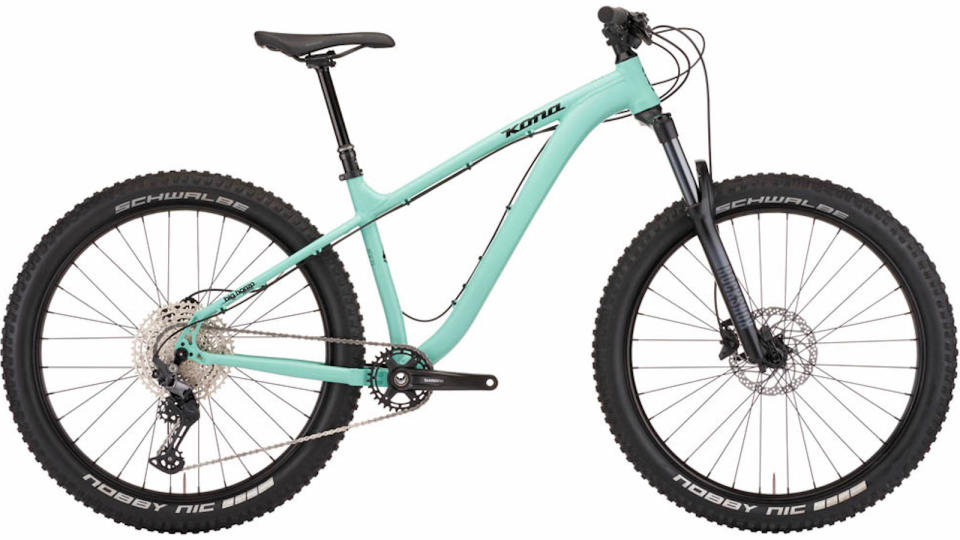
Kona Big Honzo DL
A true do-everything trail hardtail
Weight: Unpublished | Size: S, M, L, XL | Travel: 130mm | Head angle: 67.5-degrees | Seat angle: 75-degrees
Do-everything capability
Ample tire clearance
Slack geometry
Heavier than some on this list
Many companies have embraced the do-everything capabilities of trail hardtails and Kona's Big Honzo has been leading the trail bike category for a long time. To create a bike that can take on anything Kona has used its trail carbon fiber to build a frame that has enough brutish qualities to muscle through the toughest terrain while still light enough to pedal all day.
The Big Honzo's biggest strength is its adaptability. All frames have the same low standover height so bike size can be chosen on reach figures without being stifled by leg length. Kona has designed the Honzo around 27.5+ with enough clearance for a 3-inch tire but is also compatible with 29er wheels. The smaller wheel size leads to a quicker handling bike, and plus-size tires are popular among riders seeking lower tire pressures to create more traction.
While the Big Honzo will eat up most trails with a big grin, if gravity-induced madness is frequently on the menu an angle set can be used to slacken out the 67.5-degree head angle and ISCG05 tabs for a chain guide (remember those).
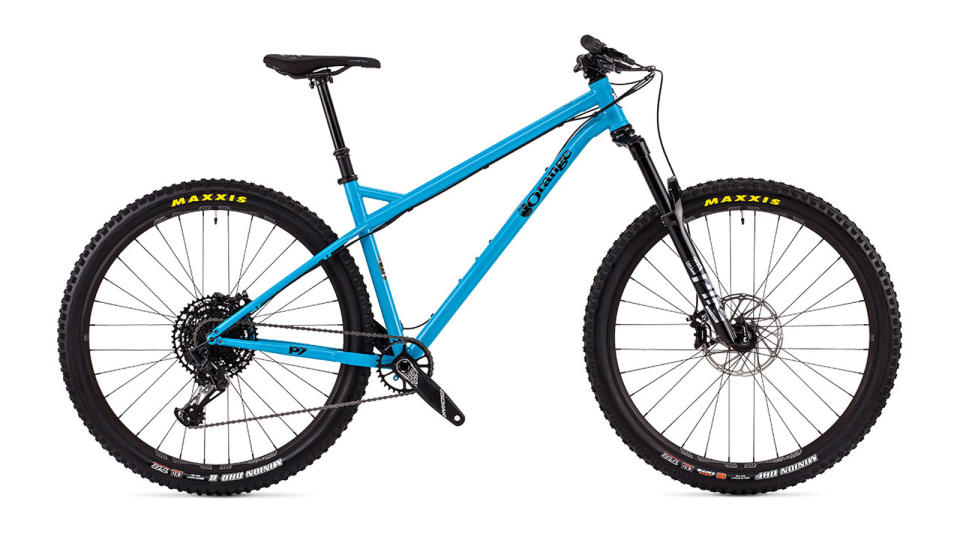
Orange P7 R 29
A blue bike from Orange
Weight: Unpublished | Size: M, L, XL | Travel: 140mm | Head angle: 65-degrees | Seat angle: 74-degrees
Long, slack and low for agro trail riding
British heritage
Limited Lifetime Crash Replacement
Steel isn't light
The P7 from Orange bikes is a hardtail for those that love hardtails.
Hardcore hardtails have always had an almost cult-like following in the UK - chiefly owing to our tight short forest trails, rich dirt jumping history and a build-it-yourself mentality of a few homegrown companies. One of those players is Orange Bikes who has been building hardcore bikes since 1988.
The Orange P7 has seen a huge evolution since its first release, growing from a bike that would have more in common with modern gravel bikes and into a hardtail built for the most demanding trails.
Orange has stuck with tradition and built the P7 from Reynolds 525 for a forgiving twangier ride feel that is attributed to steel frames. A head angle of 65-degrees and 140mm of travel keep the bike tracking straight and in control when the riding gets zesty. The P7 comes with clearance for 29x2.6-inch or 27.5x3.0-inch tires as well as a 27.5 version of the P7.
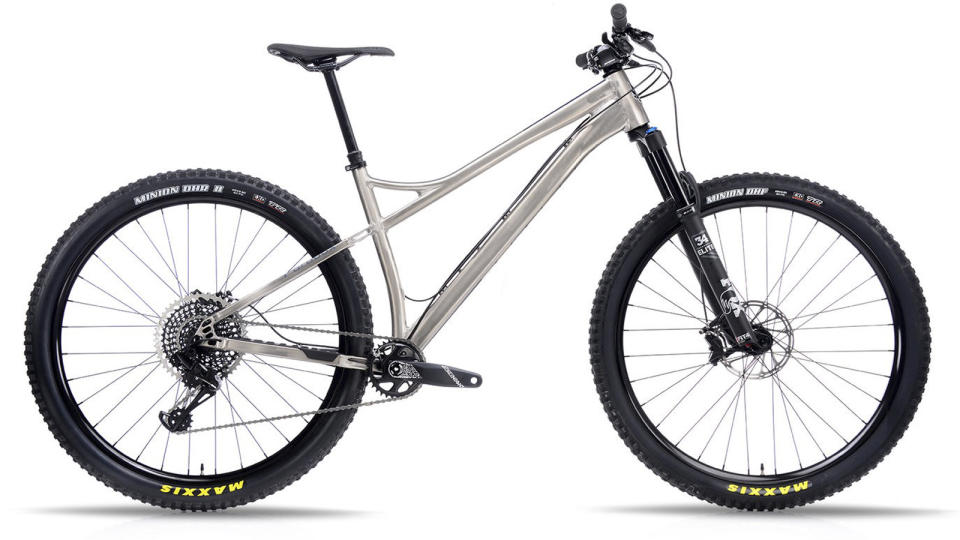
Banshee Paradox V3
An aluminum riot bike with steel principles
Weight: 2.3kg (frame) | Size: M, L, XL | Travel: 120-150mm | Head angle: 65-degrees (550mm axle to crown fork) | Seat angle: 76.25-degrees (550mm axle to crown fork)
Light as an alloy bike, comfy as a steel one
Hugely capable descending geometry will reward you on technical trails
It might be alloy, but it certainly isn’t XC light
Sold as frameset only
The Canadian boutique brand has significantly redesigned its downhill-biased hardtail and if you love railing berms and launching jumps, this is the bike for you.
Banshee’s staff includes a former Rolls-Royce aviation engineer and, as such, the brand does nothing for the sake of fashion or trend. All its frame engineering has fundamental technical justification. The claim is that the third-generation Paradox rides with the compliance and comfort of a steel frame, while bringing the lower mass benefit of aluminum construction.
Beautifully machined stays with structural cut-outs (designed for lateral stiffness with vertical flex) are supported by internally ribbed tubing, to guarantee strength.
Everything you need to know about buying the best hardtail mountain bikes
How much should I spend on a hardtail?
Well equipped hardtails, such as the Vitus Sentier, start at around a 1,000 bucks/quid. That said, there are lots of cheaper options out there too, but they will have more basic or older specification components and heavier overall bike weights.
Like any kind of bike these days, the sky is pretty much the limit at the top end of the price range, but spending 2,500 to 3,000 dollars/pounds will get you a thoroughly sorted aluminium model. Carbon framed bikes cost a little bit more and while there are lots of options around that price, the components they come with won't be quite the same quality.
Are carbon hardtails worth the extra expense?
Without rear-suspension to cushion terrain, frame material and layup become an important consideration. Diverse materials and tube sizes will absorb terrain impacts differently, which can either increase or decrease your ride comfort.
Carbon can be tuned to absorb vibrations effectively whilst also being lightweight and stiff in corners or when pedaling. Carbon is more expensive though and budget carbon models can often be overbuilt and have a harsh ride quality.
Steel holds a fond place amongst the hardtail community. Well-made steel frames are strong, comfortable and are far more affordable. This comes with a weight penalty though as steel is relatively heavy.
Aluminum rather unfairly got a reputation for being overly stiff and harsh in the past. However modern manufacturing methods have greatly improved the compliance of aluminum. It's also lighter than steel and is very affordable.
Is tire size particularly important on a hardtail?
An easy way to add more ride comfort to any hardtail is by increasing its rear tire size and allowing that additional air volume in that tire to act as a marginal suspension intermediary of sorts. To run a larger rear tire you’ll need wider chainstay and seat stay spacing, all bike manufacturers will state a maximum tire size on the spec of the frame/bike.
What size seat tube should I get?
Seat tube diameter is a huge influence on general ride comfort, too. If you are seated and rolling along on even terrain or climbing, a great deal of terrain compliance results from your seat tube’s flexibility. The larger your seat tube diameter is, the harsher the ride quality will be. This is the reason why 27.2mm seat tubes have remained in fashion with hardtail mountain bike designers.
This seat tube diameter issue, in as much as it is related to ride comfort, adds complexity to the question of dropper seat post compatibility. There is a trend towards a minimal seat tube diameter of 30.9mm, due to dropper seat posts becoming more popular, even with weight-obsessed cross-country riders.
Seat tube diameter is a considerable specification decision for any hardtail rider. If you are going to roll big mileage and prefer a fixed seat post to save weight, the compliance of a 27.2mm tube diameter frame is important. Prefer having a more balanced riding experience with some fun on the descents? Then you’d need either a 30.9mm or 31.6mm frame to accommodate most of the contemporary dropper seat post configurations.
How heavy are hardtail mountain bikes?
Hardtails are rationally better due to an inherent simplicity and lower cost of maintenance, but weight is their currency. If you are counting grams, the lightest bike on this list is the Cube Elite. Thanks to modern geometry and build kits, even the lightest cross-country bikes can tackle the most technical downhills with ease.
Those hardtail loyalists who seek a light bike with winter weather survivability should consider the Santa Cruz Highball. Its ability to run single speed will dramatically reduce component wear and rider frustration during an intense block of winter training in muddy conditions. It remains one of the very few carbon hardtails which accommodates the suffering of single-speed converts.

